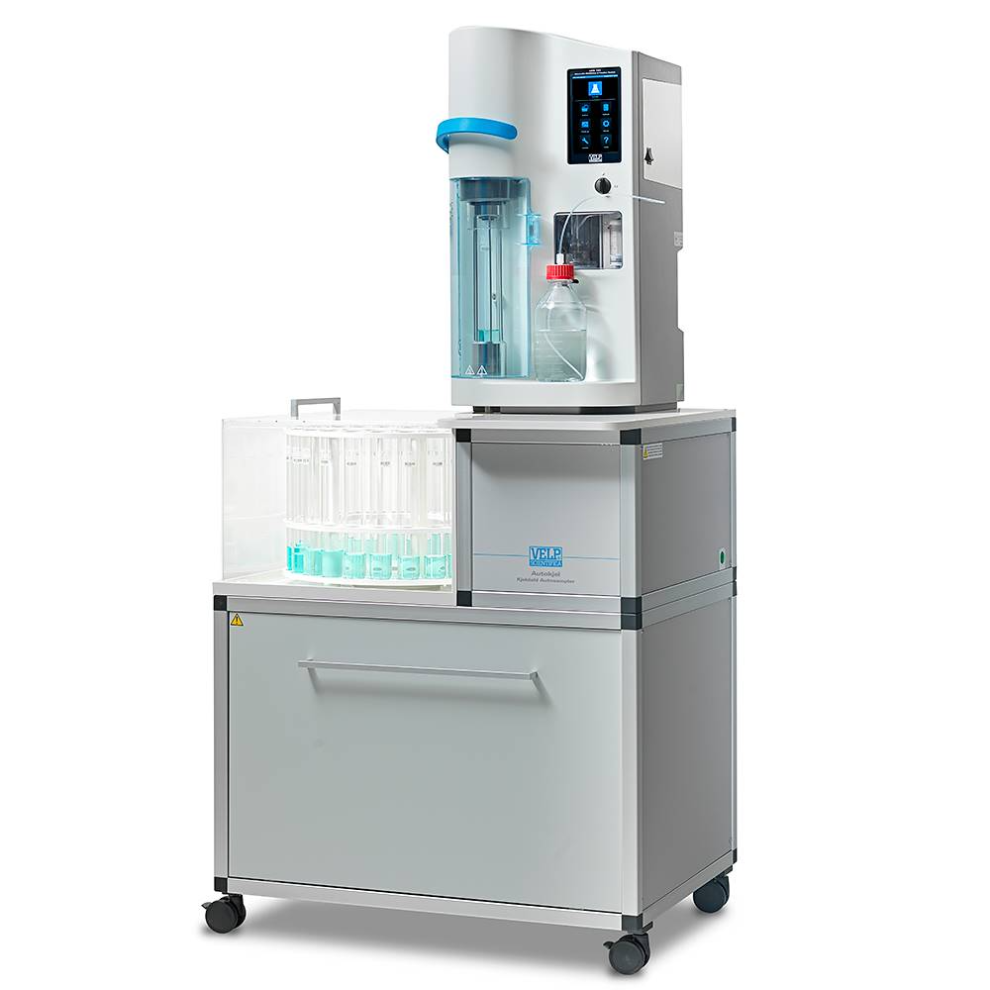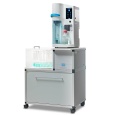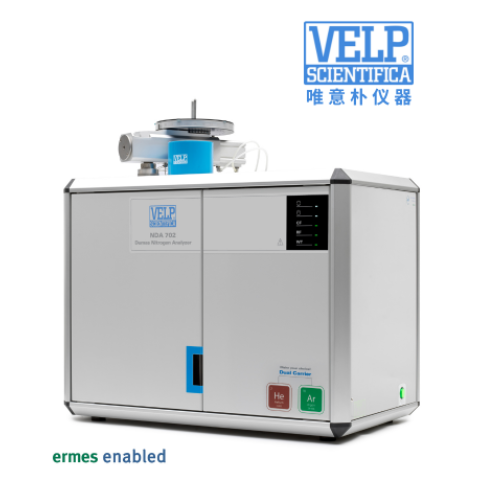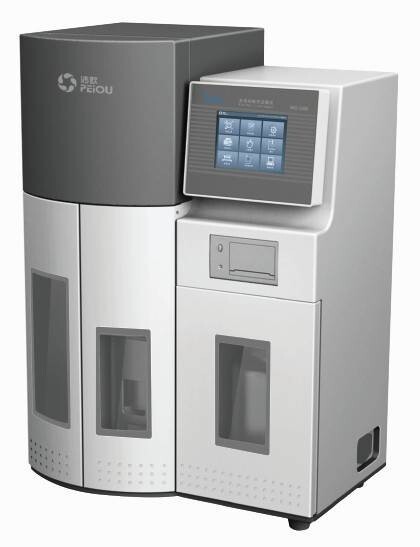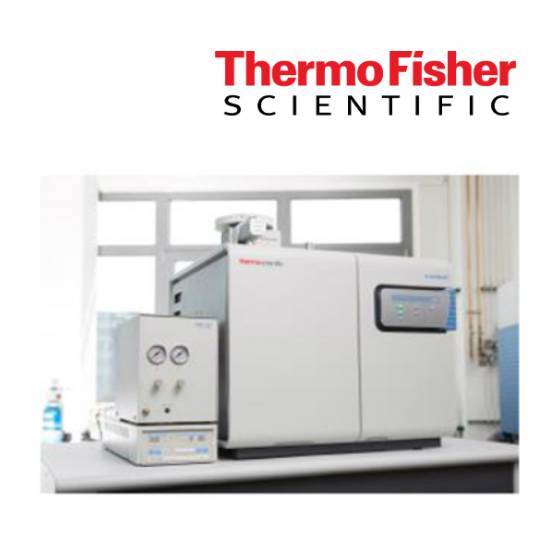方案详情
文
采用凯氏定氮仪UDK 169,消化炉DKL20检测奶酪中N/蛋白质的含量,结果可靠,重现性与期望值一致,相对标准偏差较小(RSD < 1%),重复性好。
方案详情

APPLICATION NOTEF&F-K-001-2014/A1 N/PROTEIN DETERMINATION IN GOAT CHEESEKJELDAHL METHOD N/Protein Determination in Cheeseaccording to the Kjeldahl method Reference: IDF 20-1, ISO 8968-1 Second Edition 2014-02-01 Milk and milk products-Determination of nitrogencontent; AOAC 991.20 Nitrogen (Total) in Milk Tested with VELP Scientifica DKL 20 Automatic Kjeldahl Digestion Unit (Code S30100210) andUDK 169 Automatic Kjeldahl Analyzer with AutoKjel Autosampler (Code S30200160) Introduction Milk and dairy products play a role of primary importance in the human food, and are essential to the balance and theadequacy of the food ration. It is possible finding on the market, different kind of dairy products of different animalspecies, like sheep whole milk, goat whole milk and cheese, dried milk products including milk-based infant formulae.Commonly, it can be processed for the production of butter and cheese, such as the Greek “Feta”and the Italian“Caprino cheese". Recently, this dairy product market has grown rapidly, because, for example, goat milk is veryappreciated by lactose-intolerant people, due to low lactose content. In order to create typical sensory features of these dairy products, it is important to know the attitude of the raw milk,depending also on its protein content. Due to the greater demand and consumption of goat/sheep dairy products, proteinanalysis has become more and more important to ensure food safety, food quality and fairness in international trade. Protein Determination in Goat Cheese according to the Kjeldahl Method Kjeldahl is nowadays the most used method for determining nitrogen and protein contents in foods and feeds, thanks tothe high level of precision and reproducibility and to its simple application. The modern Kjeldahl method consists in a procedure of catalytically supported mineralization of organic material in aboiling mixture of sulfuric acid and sulfate salt at with digestion block temperature at 400°C. During the process theorganically bonded nitrogen is converted into ammonium sulfate. Alkalizing the digested solution liberates ammoniawhich is quantitatively steam distilled and determined by titration. Sample Italian Goat Cheese Protein labeled content: 10-12% according to the batch production Sample Digestion Homogenize the cheese manually with a spoon. Weigh 1,000 g of sample into a nitrogen-free weighing boat (code CM0486000) and place it into a 250 ml test tube.For each sample, add in the test tube: 2 catalyst tablet VTCT (code A00000281;3.5g K2SO4, 0.105 g CuSO4 x 5H2O 0.105 g TiO2) ● 12 ml concentrated sulphuric acid (96-98%) Prepare some blanks with all chemicals and without the sample. Connect the Digestion Unit to a proper Aspiration Pump (JP code F30620198) and a Fume Neutralization System (SMS Scrubber code F307C0199) to neutralize the acid fumes created during digestion phase. Digest the samples for 15 minutes at 150 ℃, plus 15 minutes at 250 °℃ and 40 minutes at 420 ℃ according to themethod“milk and derived products”(n°1 on DKL 20). Distillation and Titration Let the test tubes cool down to 50-60°C. Condition the UDK 169 with Autokjel Autosampler unit by performing the Automatic Check-up and Wash-downin theMenu-System. Distill the samples according to the following parameters (pre-defined method n°1): ●H20 (dilution water): 50 ml ● NaOH (32%): 50 ml H3BO3 (4 % with indicators): 30 ml ● H2SO4 (0.1 N) as titrant solution ●Protein factor: 6.38 Distillation & Titration analysis time: from 4 minutes for one test. VELP titanium condenser ensures that distillate temperature always remains below the safe threshold value (35°℃), asindicated in the IDF 20-1 and ISO 8968-1. Typical Results on Goat Cheese The results are automatically calculated by UDK 169 as a percentage of nitrogen and percentage of proteins.This is “protein” on a total nitrogen basis. Sample quantity (g) Nitrogen % Protein % 1.007 1.606 10.245 1.015 1.631 10.407 1.037 1.622 10.351 1.022 1.633 10.421 1.039 1.638 10.452 1.027 1.606 10.247 1.021 1.628 10.389 0.952 1.644 10.488 1.042 1.639 10.457 1.003 1.634 10.427 Average± SD% 1.628±0.012 10.390±0.079 RSD%* 0.756 0.758 Protein Content: 10-12% Protein Factor: 6.38 *RSD%=(Standard Deviation * 100)/ Average The complete procedure was verified by using 5 ml of glycine standard solution (3%) containing 28 mg of nitrogen, asreference substance. The obtained recovery was >99%. Conclusion The obtained results are reliable and reproducible in accordance with the expected values, with a low relative standarddeviation (RSD<1%), that means high repeatability of the results. Benefits of Kjeldahl method by using DKL 20 and UDK 169 with AutoKjel Autosampler are: e High level of precision and reproducibility Maximum productivity and full automation Worldwide official method Reliable and easy method Time saving Moderate running costs 牛奶和奶制品在人类食物中起着至关重要的作用,对食物配给的平衡和充足至关重要。在市场上可以找到不同动物种类的不同种类的乳制品,如绵羊全脂奶、山羊全脂奶和奶酪,包括以牛奶为基础的婴儿配方奶粉的奶粉。一般可加工生产黄油和奶酪,如希腊的菲达奶酪和意大利的卡普里诺奶酪。最近,这一乳制品市场发展迅速,例如,羊奶由于乳糖含量低而受到乳糖不耐症人群的青睐。为了创造这些乳制品的典型感官特征,重要的是要知道原料奶的品质,这也取决于它的蛋白质含量。随着山羊/绵羊乳制品需求和消费的不断增加,蛋白质分析在确保食品安全、食品质量和国际贸易公平方面变得越来越重要。参考: IDF 20-1, ISO 8968-1 Second Edition 2014-02-01 Milk and milk products - Determination of nitrogen content; AOAC 991.20 Nitrogen (Total) in Milk检测仪器:意大利velp 凯氏定氮仪UDK 169,消化炉DKL20检测样品:Italian Goat Cheese 蛋白质含量: 10-12% 检测结果:通过软件计算的蛋白质及氮含量。以含28 mg氮的5 ml甘氨酸标准溶液(3%)作为对照品,验证了整个过程。回收率为>99%。结论:结果可靠,重现性与期望值一致,相对标准偏差较小(RSD < 1%),重复性好。采用凯氏定氮仪UDK 169,消化炉DKL20检测优势特点:高精度,重现性好最大生产力和全自动化符合相应标准方法可靠简便的方法节约时间运行成本适中
确定
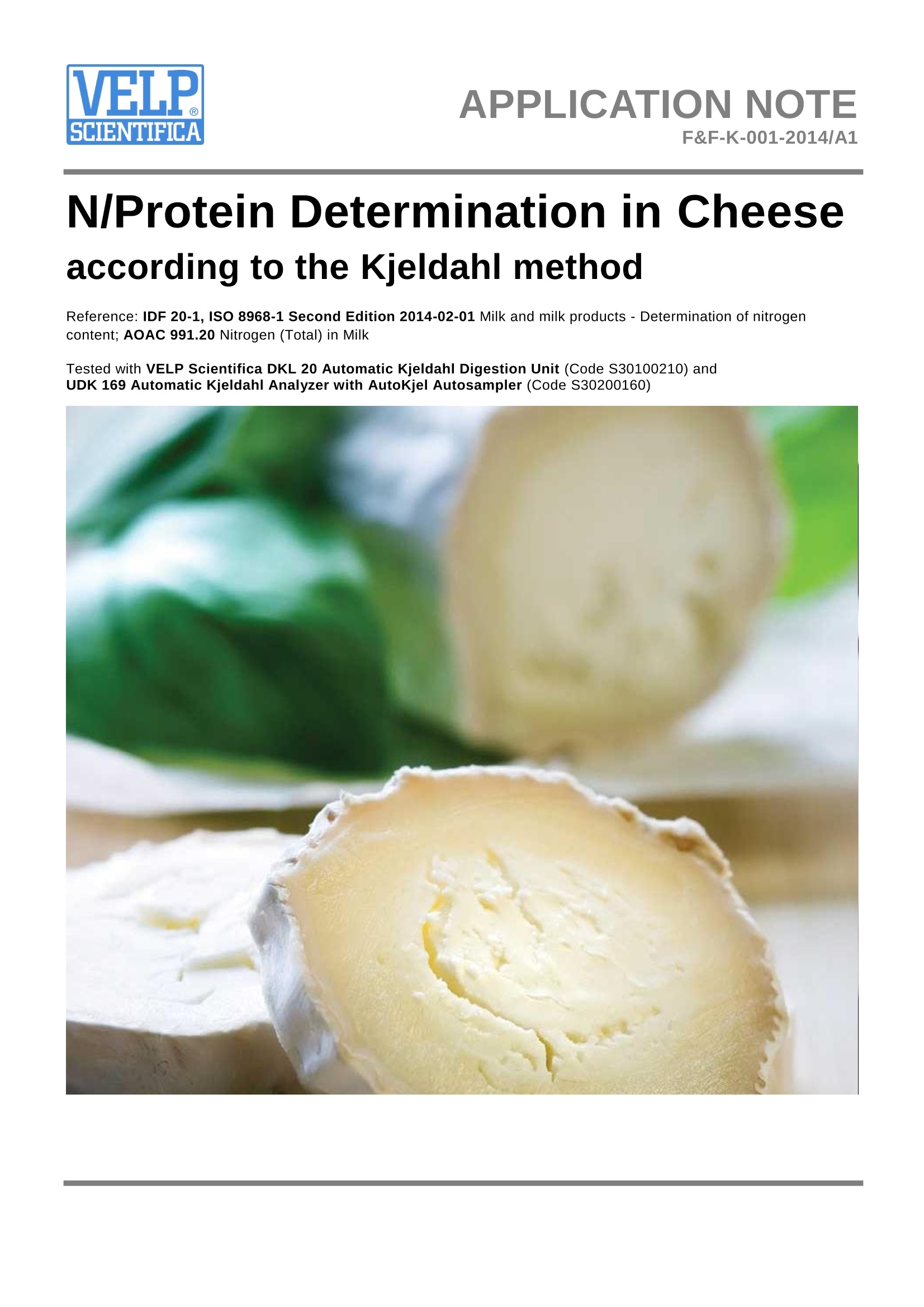
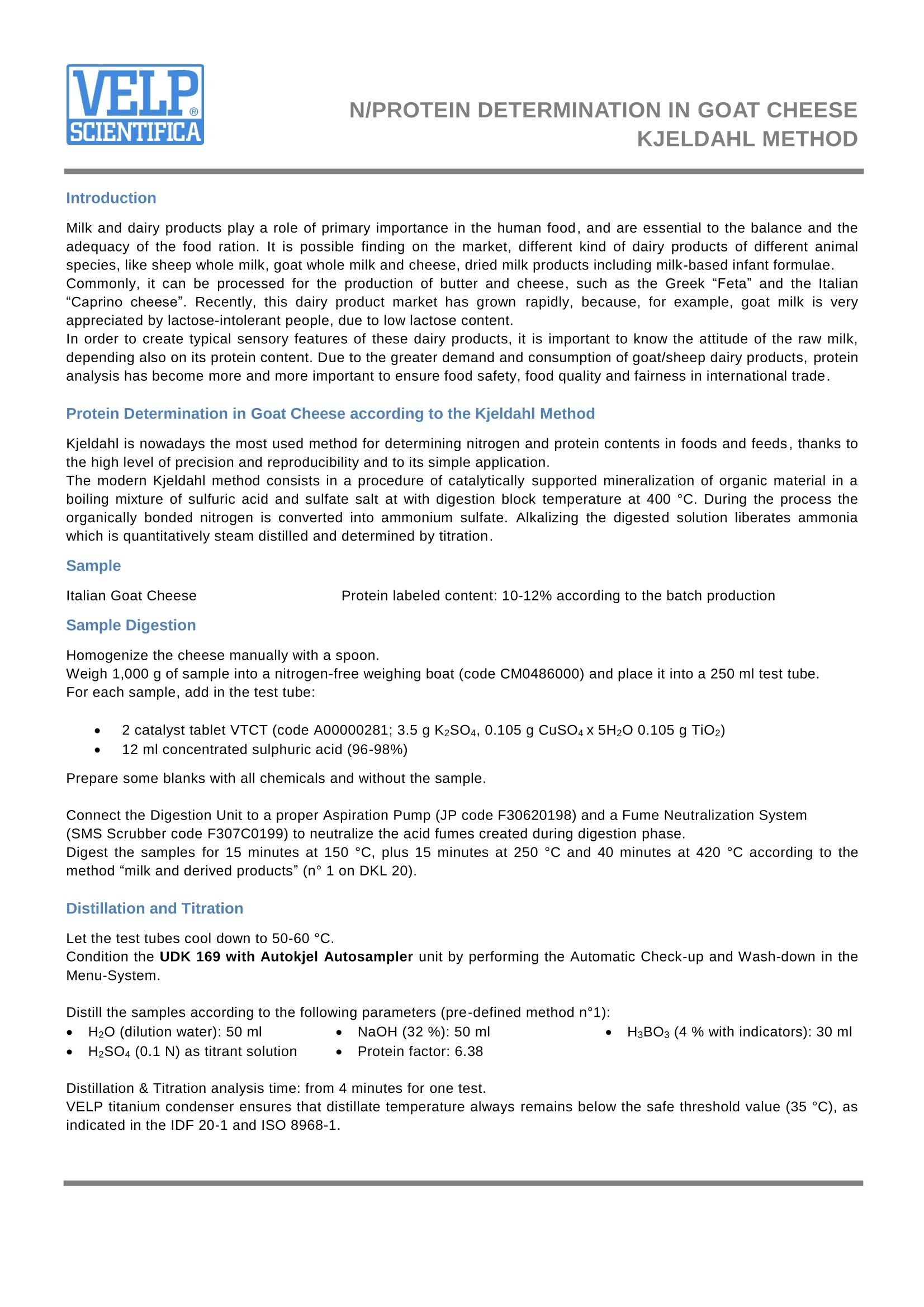

还剩1页未读,是否继续阅读?
北京盈盛恒泰科技有限责任公司为您提供《奶酪中N/蛋白质的测定检测方案(定氮仪)》,该方案主要用于其他乳制品中营养成分检测,参考标准--,《奶酪中N/蛋白质的测定检测方案(定氮仪)》用到的仪器有VELP全自动凯氏定氮仪UDK169 and AutoKjel
推荐专场
相关方案
更多
该厂商其他方案
更多

